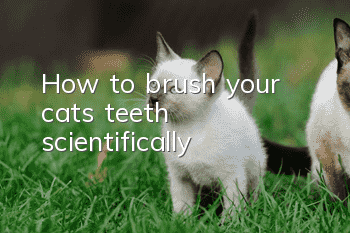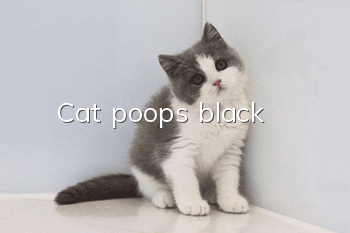How to brush your cat’s teeth scientifically?

Brushing your cat's teeth may be the most effective way to reduce plaque and maintain long-term oral health. Just like humans, brushing your teeth not only prevents plaque and tartar from forming; it also promotes healthy gums and reduces bad breath. Whenever possible, brushing your cat's teeth daily or even twice a day is recommended for cats of any age. However, this must be done gradually and with caution.
How to brush your cat’s teeth scientifically?
Some cats appear to be susceptible to dental disease, despite every effort to prevent it. The chemical composition of saliva is a factor that affects tooth and gum disease in these cats, along with immune response, the presence of bacteria and infection, among other factors. Strict home care or, in severe cases, multiple tooth extractions may be required to help these cats.
Cats can begin dental home care at any age, but generally, the younger a cat is when treatment begins, the easier it will be to settle into a routine. Kittens, in particular, usually don't take long to get used to brushing, while older cats may need a slower, more gradual approach.
The thought of brushing your cat's teeth may seem strange or even scary to you. While not all cats tolerate it, many do, and it's a great way to keep your mouth and teeth healthy.
Home dental care usually begins after your cat's teeth are cleaned and polished under anesthesia. In this case, it is often recommended to give the mouth a few days to heal and reduce inflammation before starting home care. This is especially important if your cat's teeth were removed. However, after this, home care should begin as soon as possible.
Dental home care should be performed the same way whether you have a kitten or an older cat. It helps to establish a daily routine and choose a convenient time to ensure brushing every day. Doing this can also help cats.
While dental home care is best done after your cat has eaten, many cats will eat many small meals throughout the day, and you may also prefer to reward your cat with some food after brushing, so timing is not critical. .
What do you use to clean your cat’s teeth?
When you plan to brush your cat's teeth, it's important to use the right equipment. Do not use human dental products on cats. Specific animal dental products are readily available - ask your veterinarian. You will need:
Toothbrush - Get an appropriate toothbrush for your cat and a separate toothbrush for each cat, as saliva can be a major route of cross-infection.
Veterinary/Cat Toothpaste - Cat toothpaste is very different from human toothpaste, human toothpaste will be unpleasant for cats and may cause gastritisStimulate. Cat toothpaste usually comes in a variety of flavors, such as chicken, beef, fish, or mint—you can try different flavors to see which one your cat likes best.
Feline dental home care "starter kits" are sometimes available. Some of these include a "finger brush" (a brush that fits on the end of your finger) instead of a regular toothbrush. However, these should be used with great caution and in most cases are best avoided to reduce the risk of being bitten!
How to brush your cat’s teeth?
The following methods can be used for dental home care:
For the first few days, build your cat's trust by putting a little toothpaste on your finger and handing it to her. Some cats will love the smell immediately, while others may be a little reluctant. If you don't want to, you can try putting a little on your cat's nose. He/she will hopefully lick it off, and usually, once they've tasted it, they'll take it away from you.
It is useful to familiarize yourself with how to hold your cat's head during brushing in the first few days. To avoid scaring your cat, try doing this at a different time than when your cat is sleepy and when you are brushing her teeth. If possible, try this a few times a day because you'll feel more confident when you start brushing.
It is usually better to have your cat face away from you than to approach him from the front. Not only is this less of a conflict for the cat, but if your cat squirms, they will usually move backwards, toward you, and you'll have better control.
Spread your hands out, since you want a firm but gentle hold, and place your palms on top of the cat's head, but facing back, using your thumb and forefinger on the cheekbones just below the eyes. Hold tight all around. Your index finger should be raised so it doesn't cover the cat's eyes.
Gently tilt your cat's head upward and use your thumb to gently lift your cat's upper lip
Use the thumb or index finger of your other hand to gently pull down your cat's lower lip - this should give you a good view of your cat's teeth on the side .
For the next 2-3 days, support your cat's head in the same way, but instead of using your second hand to support the lower lip, apply some toothpaste to the cotton bud , then gently apply the toothpaste to your teeth in a circular motion.
Start with the back teeth, as these are often the hardest to reach but the most important to brush. Slowly move forward until the canine teeth appear.
If your cat tries to block you with its feet, have someone else hold your cat's front legs, or, if you are alone, wrap them in a towel or blanketIt may be easier to wrap your cat.
It will be much better to try to get your cat used to having its mouth touched by repeating these steps little by little until you feel you are ready to move on to the next stage .
Finally, you can start using a toothbrush. The procedure is the same; move in small circular motions, starting from the back. Start by brushing for about 10 seconds on each side, then gradually increase to 30-45 seconds on each side. When you first start brushing your teeth, you may experience a small amount of gum bleeding. It's very common, and you'll find that as you brush your teeth more regularly, the bleeding will stop and your gums will become healthier.
If you find that spending a few days at each stage is too fast for your cat, then decide how many days you need to allow your cat to adjust and get used to the process. The most important thing is to view home care as an enjoyable event rather than a war between you and your cat.
Sometimes it is easier to see someone demonstrating dental home care on your cat. Most veterinary clinics will schedule an appointment with a veterinarian to do this, so if you have questions, contact your veterinarian.
Other home care techniques for cats?
Some cats won't tolerate brushing, no matter how hard you insist. In these cases, there are still ways to help prevent plaque and tartar from building up:
If your cat eats soft foods, adding or changing dry foods to your cat's diet may help reduce plaque and tartar buildup. However, check with your veterinarian first to make sure a change in diet is appropriate for your cat.
Cat dental chews can usually be purchased from your veterinarian and perhaps from a pet store. They come in different flavors and can help reduce (but not prevent) the formation of plaque and tartar - ask your veterinarian what the most effective chewing method is.
If your cat likes toothpaste, you can try using some toothpaste to dry food or chew teeth and let the toothpaste rub on the teeth
Chlorhexidine (an antiseptic used to control oral bacteria) mouthwash or gel are available. Although prolonged use can discolor tooth enamel, it helps reduce bacterial growth in the mouth.
Your veterinarian may also recommend that your cat eat a special "dentist's diet" - some diets have been specially formulated to help control plaque and tartar, and these may be particularly helpful for cats with dental disease. Help because brushing your teeth at home is very difficult.
While your cat will likely need dental treatment at some point in its life, regular dental home care can greatly improve oral health and reduce the need for dental procedures, which is beneficial to you andThere are benefits for your cat.
- What to do if a kitten doesn’t use litter? How to teach it to use a litter box?
- Why do Ragdoll cats like to lick themselves?
- What are the causes of frequent urination in cats? Do you know them all?
- How to measure a cat’s temperature? Is it normal for a cat’s ears to be hot?
- Can cats eat pumpkin?
- Why are bantam cats' legs so short?
- Is a cat’s nose normally dry or wet?
- Can cats eat mushrooms?
- When raising a cat, you should eliminate these safety and health risks and become a qualified poop scooper.
- Cats peeing everywhere may be a problem with the cat litter!



